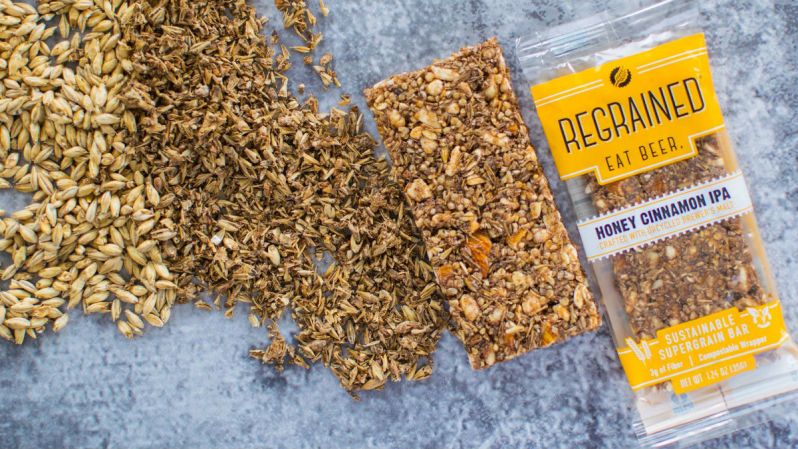Six billion gallons of beer are brewed annually in the U.S. From that process, 36 billion pounds of grain are left over. Some of it goes to farms to make fertilizer, but a lot of it goes straight to the dump. What if we could turn it into food for us?
ReGrained, a small company from San Francisco, is working on a way to turn that waste into food — and a delicious one at that.
Founders Jordan Schwartz and Dan Kurzrock started making beer in their college dorm rooms. For every batch they made, they threw out 15 to 20 pounds of an oatmeal-like soup that is thick, hot, and unstable. At first glance, there was nothing they could easily do with it.
Then they found out that some home brewers grind up the leftover grains into a flour and make things like bread. Keen to take advantage of any way that could fund their next brew, they started making and selling bread to fellow students.
Not content with just a few loaves of bread each week, they wanted to take their dorm room operation to the next level. They needed something that could be made faster and in higher quantities. Granola bars fit that model well.

Flash-forward to today, and their company ReGrained sells three flavors of beer-inspired bars online, at events, and in an increasing number of retailers across the U.S. Bars like Chocolate Coffee Stout, Honey Cinnamon IPA, and Blueberry Sunflower Saison are just the beginning for ReGrained. Once they’ve scaled up production, the brand will be making enough beer grain flour to partner with bigger companies to make other great snacks. And, to help brewers turn their own beer byproduct into a food-safe ingredient, ReGrained is working to patent and licence their grain-drying technology.
But Schwartz and Kurzrock wanted to do more than just save the grains. One of the company’s non-negotiable values is to reduce waste in all areas — they want their wrappers to skip the garbage as well. Working with the Agricultural Research Service, part of the U.S. Department of Agriculture, they’ve developed compostable packaging. The two layers — one derived from a sustainably harvested wood fiber and the other a synthetic option that breaks down naturally — create a wrapper that will keep your food fresh but won’t sit in the landfill for centuries.
Drink beer, eat good food, and save the environment. Not a bad way to spend your time. Or, in the words, of the ReGrained mantra: “Brew Good. Bake Good. Do Good.”
Feature image courtesy of ReGrained/Facebook.


